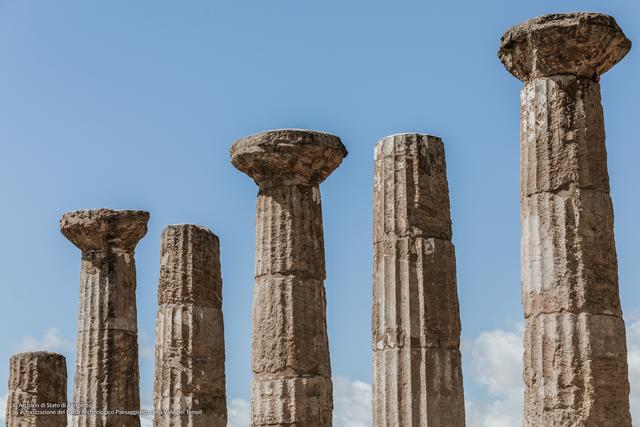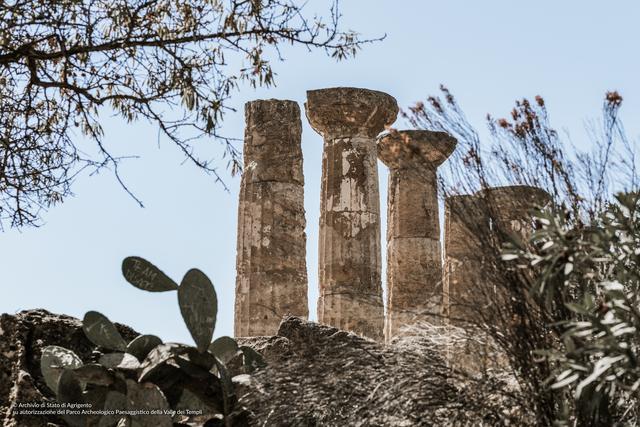Temple of Hercules
The discovery of a headless statue piqued the commission’s interest in the site to such an extent that they appointed the provincial architect Saverio Bentivegna to work alongside the local delegates from Girgenti. Bentivegna’s reports provide an image of a temple that was “completely ruined”, so much so that at first he claimed he was incapable of producing a cost estimate for its restoration. As we can glean from the notes of the Girgenti Prefect, the way these “venerable ruins lie on the ground” was due to “the effects of the earthquake” and because it had been “raised to the ground” by the Carthaginians. As it turns out, only one of the eight columns that lay on the ground had survived these calamities. He beseeched the Commission to rebuild the eight majestic columns of the temple “certain that it would be for the benefit of the area and of Italy” [Complesso archivistico: Prefettura di Agrigento, Intendenza e atti della Prefettura di Girgenti 1827-1887 b. 486 4]. But it took until 1923 and funding from Sir Alexander Hardcastle for the restoration to take place, enabling us to admire the columns as we see them today.
Image gallery








The other points of interest in the same route
-
Pietro Griffo Regional Museum of Archaeology
In 1867 a vase was recovered and delivered to the Municipal Museum of Girgenti.

-
Temple of Dioscuri
The Temple of Castor and Pollux, or Temple of Dioscuri, as it is known in Italian, stood in the southern part of a vast complex of sacred areas, known as the Sanctuary of Chthonic Deities.

-
Temple of Demeter
The growing fascination for classical antiquities fuelled the illicit trafficking of historical relics, which were sold to private collectors or even to the king on payment of a reward.

-
Temple of Jupiter
The Temple of Jupiter, or Temple of Zeus, is an important example of the different approaches that have been applied over the years towards Agrigento’s archaeological site.
